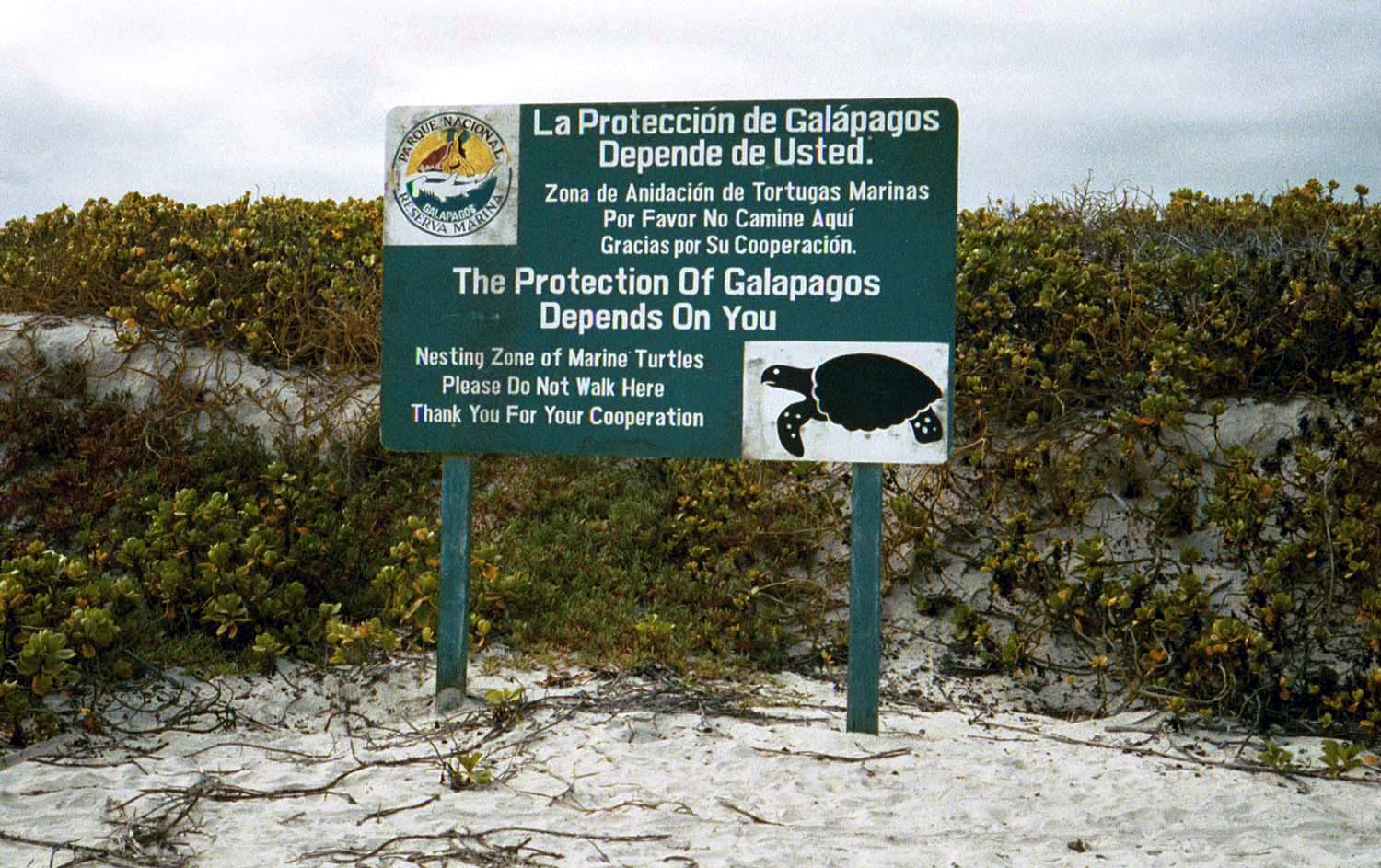AUTHOR Daniel Andino

CONSERVATION IN GALAPAGOS
Giving back to the Galapagos Islands with IGTOA
The Galapagos Islands have experienced many challenges the last few hundred years. Having seen the influx of pirates, introduced species, and more recently unregulated tourists, many of the islands have changed dramatically. Relentless harvesting of defenseless endemic tortoises, massive illegal fishing, and the introduction of invasive plant and animal species have combined to threaten the ecological integrity of the Galapagos region.

The entire Galapagos archipelago is massive, consisting of six main islands, 40 smaller islands and countless inlets, totaling 53,000 square miles of protected marine reserve. Protecting a region this large requires constant monitoring and control of human activities, but although the costs of ongoing management are enormous, the benefit is even greater.
Galapagos is unique in the world (70% endemic). They didn’t make two of them; when this one is spoiled or gone, it’s forever.
It is in this spirit that — together with IGTOA — Ecoventura has championed the Galapagos Traveler Conservation Fund (GTCF), because we recognize that travelers play a critically important role in protecting the special places on earth.

Starting in October 2017, all four Ecoventura yachts will participate in the GTCF. All of our guides and crew went through an orientation in September to learn about the GTCF program. As part of this support, Ecoventura, on behalf of GTCF, will ask guests to make a voluntary donation during or after their cruise to this incredible fund.

What is the Galapagos Traveler Conservation Fund (GTCF)?
The GTCF is a unique opportunity for visitors to make a personal lasting contribution to the protection of Galapagos. It is a program of the International Galapagos Tour Operators Association (IGTOA), a 501c3 non-profit organization made up of responsible tour companies dedicated to promoting sustainable tourism in the Galapagos Islands and to providing critical financial support for conservation. IGTOA and the GTCF have been supporting conservation in Galapagos for over 20 years.

IGTOA developed the GTCF to give eco-minded tourists the ability to give back to this magical archipelago during or after their visit. Tourists can make tax-deductible donations, 100% of which will go towards protecting and preserving the Galapagos Islands.
It is completely up to you whether or not you choose to make a donation, but if you do donate, you should know that 100% of your money will go directly to the people and the organizations working on the ground to protect the Galapagos and not to covering overhead or administrative expenses as those costs are covered by IGTOA and its member companies, including Ecoventura.
Why is the GTCF so Important?
Biologists believe that Galapagos is the world’s test case for the very concept of nature conservation because if conservation can’t work in Galapagos, where else on earth could it work? Protecting Galapagos isn’t just a priority; it’s a necessity.

The protected areas are managed by the Galapagos National Park Service (GNPS), which is an agency of the Government of Ecuador. The Galapagos Park entrance fee you pay to enter the park is actually distributed to all the national parks within Ecuador and only a smaller portion is returned to the GNPS to finance the very expensive work of patrolling, monitoring, and protecting the islands and vast marine reserve.
Current funding falls short of what is realistically needed to protect the natural integrity of Galapagos. Management authorities must rely on outside sources of funding.
A major source of outside funding comes annually from Galapagos tourists. Their donations support the indispensable conservation work being carried out by conservation organizations such as the Charles Darwin Foundation, Galapagos Conservancy and Galapagos Conservation Trust, and many others.
Without this financial help, the daily management of Galapagos would be severely constrained.
What do the GTCF Funds Support?
The funds you donate will be awarded via a grant process to different worthy conservation organizations in Galapagos. In the past, funds have gone toward projects like purchasing a K-9 sniffer dog unit to detect invasive species at airports and ports and spaying and neutering pets to help control domesticated animal populations. Improved quarantine controls and Marine Reserve monitoring equipment are other examples.
Some of the issues currently being tackled with the generous donations of guests include the combatting of invasive species, battling illegal fishing in Galapagos waters, and the education of Galapagos youth about conservation initiatives and techniques.

Combatting of Invasive Species:
Invasive species are the single biggest threat to fragile native and endemic species of Galapagos. The GTCF has channeled critical financial support to organizations working on the front lines in the battle against invasive species, helping to improve quarantine and cargo handling procedures between the Galapagos Islands and the mainland, and reducing the possibility of extremely destructive species arriving to the islands.
Battling Illegal Fishing in Galapagos Waters:
As part of GTCF’s ongoing commitment to combat poaching and illegal fishing, the GTCF has helped fund successful initiatives that improve environmental crime enforcement and prosecution in the Galapagos Islands and helped obtain GPS and video monitoring equipment for the Galapagos National Park Service to aid in their patrols for illegal fishing activity.
Protecting the Marine Reserve is a difficult challenge and one that requires constant vigilance and updates to technology, but it’s also seen recent confirmation of its needed presence with Ecuadorian officials capturing a Chinese vessel transporting 6,600 illegally fished Scalloped Hammerhead Sharks back to their port of origin.

This haul was disturbing on many levels given the size, scope, and catch (with Scalloped Hammerhead Sharks being one of the most sought-after marine species in the Galapagos). Divers visiting the archipelago have long sought close encounters with this incredibly unique, beautiful, and tranquil species known for traveling in schools so large they’re referred to as “clouds”.
These particular illegal shark fishermen were captured, prosecuted, and jailed. However, the fact remains that the discovery of this vessel was largely due to the fact that the Chinese crew failed to turn off their GPS transponder and evade detection.
This means the need for constantly up-to-date technology is greater than ever. Providing Galapagos conservationists with more vessels, crew, and gear is the only real deterrent for future illegal fishermen that may be actively considering pilfering Galapagos waters.
Education of Galapagos Youth:

The future of the Galapagos Islands ultimately lies in the hands of the people who live here. That’s why educating and inspiring Galapagos youth is perhaps our most important long-term investment. The GTCF supports programs (like Ecology Project International) that engage Galapagos youth in hands-on conservation training and fieldwork and inspire them to become the next generation of conservation leaders.
Stay tuned for more information from Ecoventura on the GTCF and how you could give back to the Galapagos. In the meantime, if you’d like to learn further details about current initiatives or would like to donate, please contact us! Donations are confidential and your name will never be released to another fundraising organization.
IGTOA is a registered 501(c)(3) non-profit in the U.S., so if you are a U.S. taxpayer, your donation should be tax deductible.


